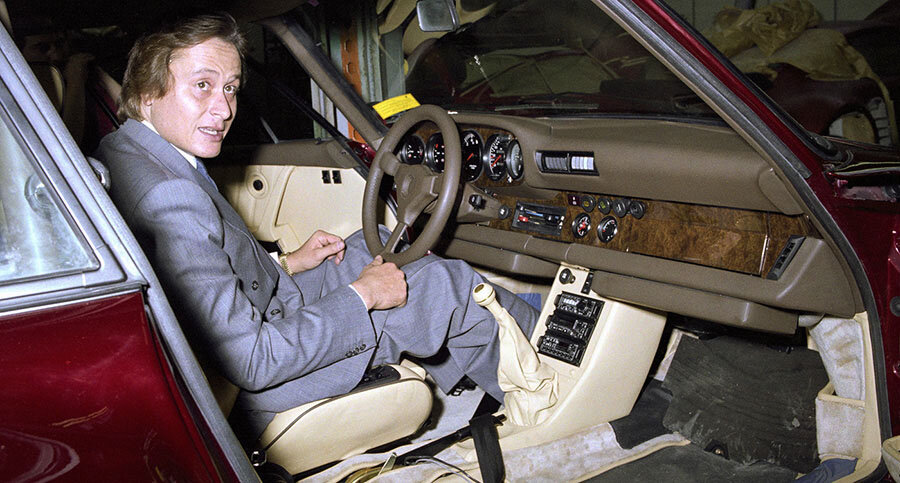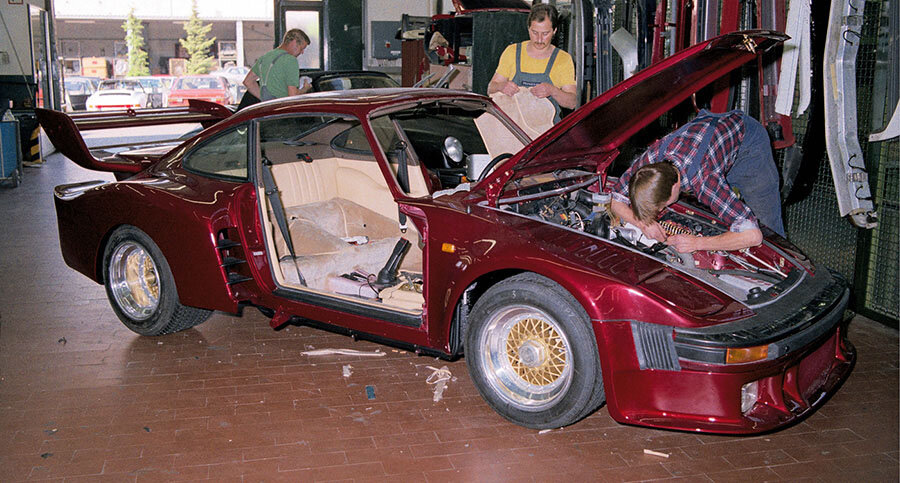VIN: Mansour Ojjeh's Porsche 930 3.3 Sonderwunsch Flachbau Spezial chassis 000817
History of chassis 000817
Arguably the most extreme 930 produced by Porsche’s Sonderwunsch department was built on chassis WPOZZZ93ZDS000817 for Mansour Ojjeh.
Ojjeh’s father, Akram, was an internationally renowned Saudi businessman. His diverse interests included aviation, construction and retail. However, he was perhaps best known as the intermediary for arms sales between Saudi Arabia and France.
In 1977, Akram Ojjeh established Techniques d’Avant Garde (TAG) a private Luxembourg-based holding company for his advanced technology and luxury brand interests.
Mansour Ojjeh was Akram’s heir apparent and took charge of TAG’s US ventures in 1977. A motor sport fan, he was instrumental in TAG becoming title sponsor of the Williams F1 team between 1979 and 1982.
In late 1981, Ron Dennis approached Porsche about the possibility of creating a turbocharged engine for McLaren. Porsche agreed if McLaren could come up with the money.
Dennis needed an investor and convinced Ojjeh to put up $5m for which he would become co-owner of McLaren. The TAG Turbo Engines programme was born.
Porsche’s TAG-branded F1 engine was unveiled at the Geneva Motor Show in March 1983. Its race debut came at the Dutch Grand Prix in August.
The following season, TAG Turbo-powered McLaren MP4/2s won twelve out of 16 races and secured both the Driver and Constructor titles. This feat was repeated in 1985 after six more Grand Prix victories.
Shortly after the Porsche-TAG engine collaboration was given the green light, Mansour Ojjeh ordered a special wish 930. Given his credentials, Porsche were happy to create arguably the most highly modified customer 911 ever; a 935 for the street complete with luxury interior.
Somewhere in the region of 550 modifications were made to Ojjeh’s car and the spec. sheet totalled no less than 17 pages. Porsche even had to obtain single vehicle type approval for it.
Special equipment included competition shock absorbers, hydraulically adjustable suspension, anti-roll bars and centre-lock BBS wheels shod with Pirelli P7 tyres. The 935 rims measured 10-inches wide at the front and 13-inches wide at the back. Ride-height was also much lower than standard.
The turbocharged 3.3-litre engine fitted to Ojjeh’s car had adjustable boost and produced 375bhp at 5500rpm. Its torque rating was 361lb-ft at 5000rpm.
The four-speed transmission was uprated with a nose-mounted oil cooler.
Bodywork was heavily modified. Flachbau front fenders were dramatically flared and a 934-style front spoiler was installed complete with auxiliary driving lights. The rear fenders and twin plane spoiler / engine cover were to 935 specification. Extended sills were required to bridge the massively wide front and rear bodywork.
Paint was a unique shade of Brilliant Red metallic.
As requested, the cockpit was luxuriously equipped.
Cream leather contrasted with brown hide for the dash, knee roll, door caps, piping and three-spoke steering wheel. Wood veneer was used for the dash fascia and instrument surround.
Special equipment included Recaro seats, a half roll cage, central locking and storage boxes instead of rear seats. There was also an extended centre console that housed the boost gauge and a state of the art Clarion audio system.
Porsche quoted a top speed of 186mph, 0-62mph time of 5.2 seconds and 0-100mph time of 11.2 seconds.
The finished car was presented to Mansour Ojjeh at Weissach in July 1983.
It was later sold to David Clark in London before heading across the Atlantic when it joined the collection of Texan oil man, John Mecom.
Text copyright: Supercar Nostalgia
Photo copyright: Porsche - https://www.porsche.com






































